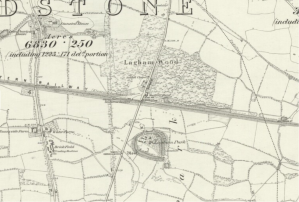Godstone (probably Goda’s Ton) was a portion of land in Walcnested given to Ethelred the Unready by Aelfheah, a Saxon nobleman, in about 970 AD.
Walcnested had two Manor Houses, Marden to the north and Lagham to the south. Lagham (derived from Old English Lagu-water; ham-house), was so called due to the many springs in the area.
Lagham Manor thrived during the 13th century and a great moat, the largest non-military moat in South-East England, measuring 100ft crest to crest and about 24ft deep was constructed.
Lagham, with the rest of Walcnested, suffered severely from the Black Death in 1349, losing its lord and nearly all the tenants. After this time the estate went into decline until the present Manor was re-built in 1662 and the estate expanded to 650 acres.
By the 18th century, Lagham Manor was an unpretentious but comfortable gentleman’s residence with landscaped gardens and deer park. The boundary of the old deer park can still be traced in many places by the ditch and bank on which the park palings once stood.
The Dover and Chatham Railway Company constructed the Redhill to Tonbridge railway line through the estate in 1841, and thus the village now known as South Godstone began to develop.
The estate and deer park were maintained until the middle of the 20th century, when in 1944 the Lagham Estate was split up and auctioned off.
During the 1950’s, the major housing developments of Lagham Park, Hunters Chase and Easter Way were constructed on the site of Lagham Wood, the only surviving woodland is to the west of Lagham Park and to the north of Hunters Chase.

Leave a comment